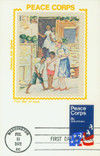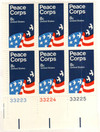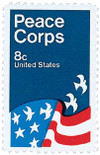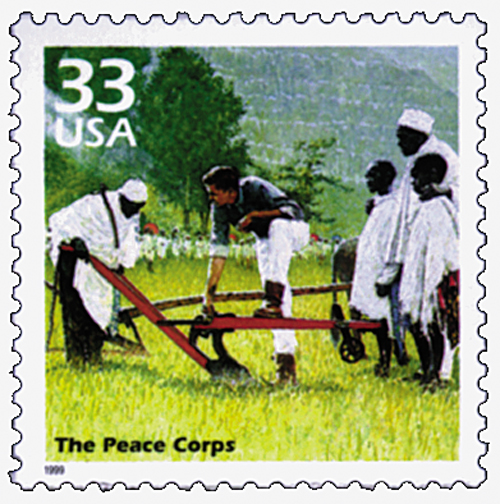
# 1447 - 1972 8c Peace Corps
Creation Of The Peace Corps
Long before Kennedy was president, he endorsed the idea of sending volunteers to other countries to give technical assistance and promote peace. As a congressman in 1951, he supported a plan to send college graduates to the Middle East to give “technical advice and assistance to the underprivileged.”
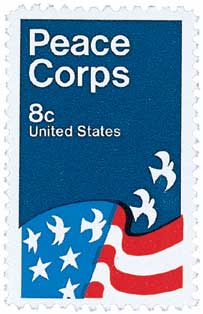
Nine years later, Kennedy revisited the concept while campaigning for president on October 14, 1960. After a hard day on the campaign trail, Kennedy stopped at the University of Michigan campus to sleep. However, when he arrived he discovered that approximately 10,000 students had assembled to hear the presidential candidate speak. In that 2:00 am speech, Kennedy asked how many of the students would be willing to “serve their country and the cause of peace by living and working in the developing world.” With that simple question, the Peace Corps was born.
On March 1, 1961, Kennedy officially created the Peace Corps when he signed a special executive order. He felt it was a way to counter anti-American sentiment around the world. His brother-in-law, Sargent Shriver, became the organization’s first director. The first Peace Corps volunteers trained at Rutgers University in New Brunswick, New Jersey. That first group left for their first mission in Ghana and Tanzania on August 28, 1961.
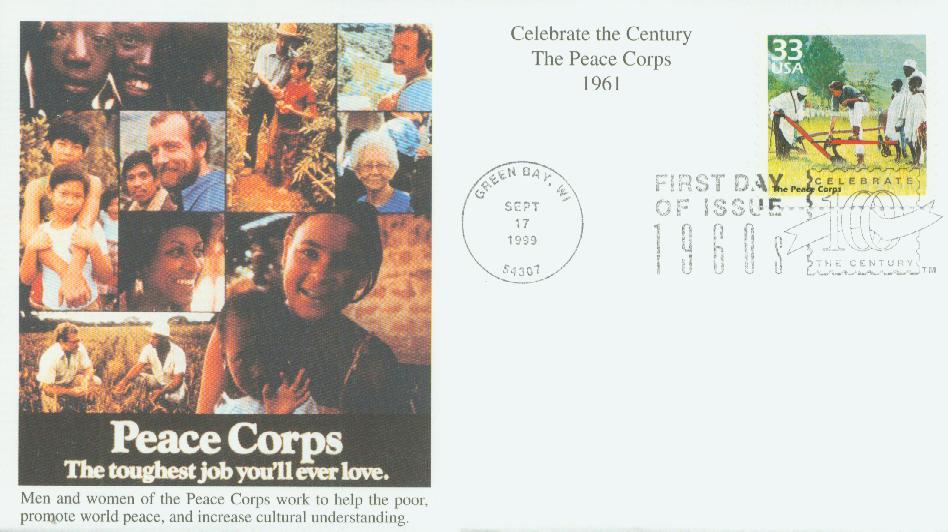
Congress passed the Peace Corps Act in September, authorizing the program that sent men and women “qualified for service abroad and willing to serve” in order to help developing countries meet “their needs for trained manpower.” In 1961, there were 900 volunteers serving in 16 countries. By 1966, 15,000 volunteers were serving around the world and by 1972 there were 50,000. The program declined in the 1980s when the Corps was asked to leave several countries.
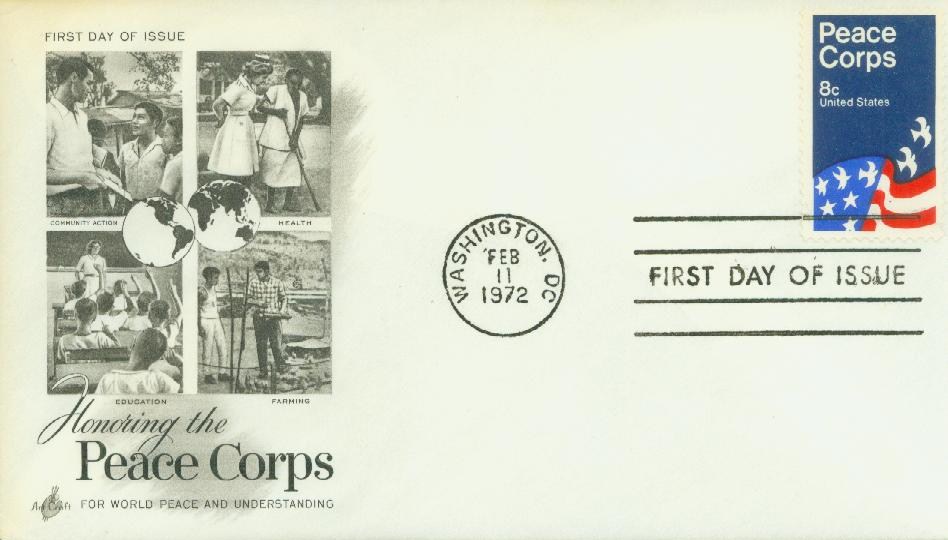
The goals of the Peace Corps are simple: “To help the people of interested countries in meeting their need for trained men and women. To help promote a better understanding of Americans on the part of the people served. To help promote a better understanding of other peoples on the part of Americans.” Volunteers work with people in developing countries to help them better their living conditions. The Corps sends people into a nation only at its request.

These goals are accomplished by sending trained volunteers to countries in order to improve the quality of life for its citizens, and in short, help them take charge of their own futures. In turn, these volunteers gain a greater understanding of different countries by being totally immersed in the native cultures. As part of their training, volunteers are taught the customs and languages of their host country so as to better fit in with the people they’re attempting to assist. While in the host country, volunteers often live in remote communities for two years with no special privileges or conveniences.
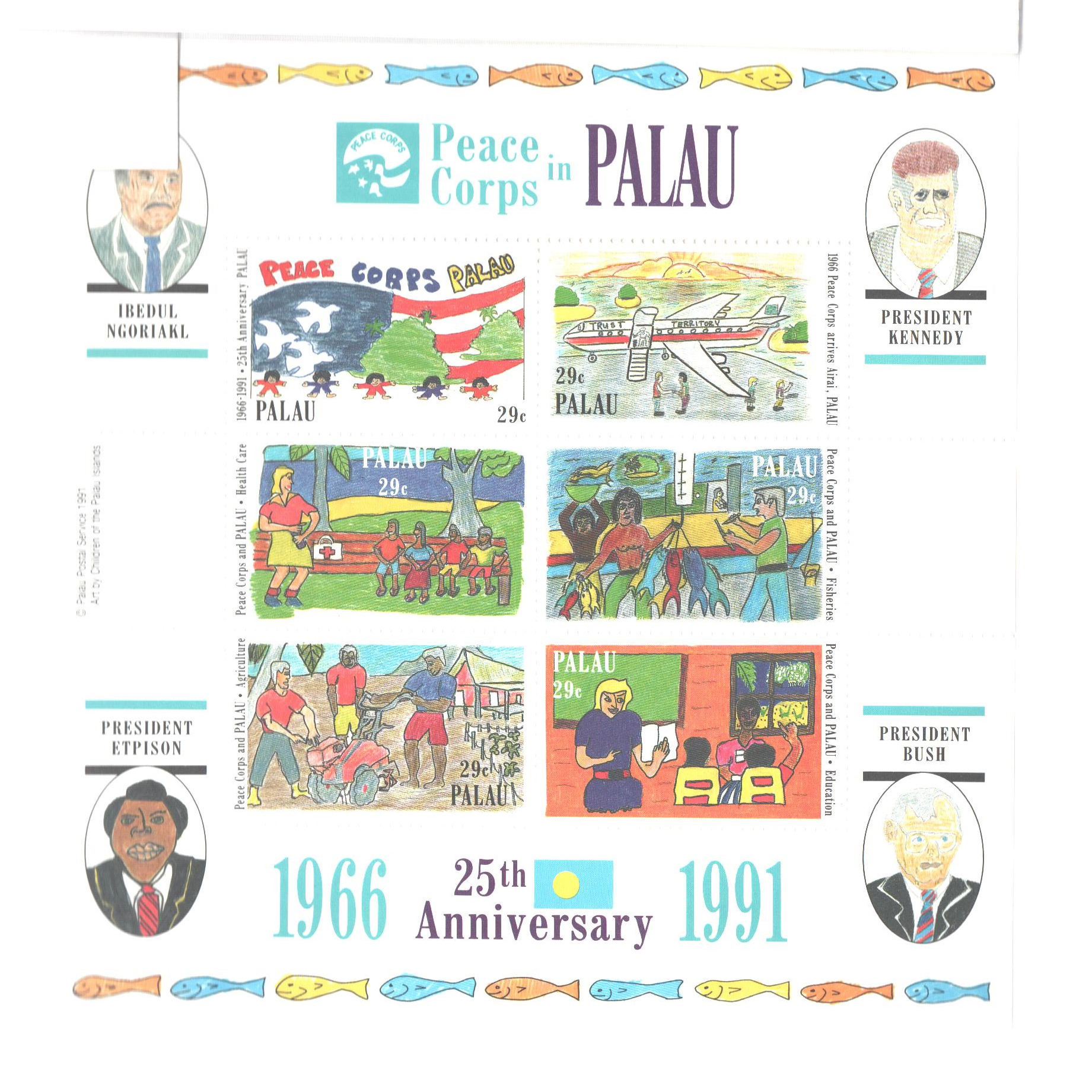
The Peace Corps program continues today. As of 2018, more than 230,000 Americans have volunteered to serve in 141 countries. In addition to serving in traditional roles in health, education, and agriculture, countries also request volunteers who are computer scientists and can help with small businesses.
Click here for more from the Peace Corps website.
Creation Of The Peace Corps
Long before Kennedy was president, he endorsed the idea of sending volunteers to other countries to give technical assistance and promote peace. As a congressman in 1951, he supported a plan to send college graduates to the Middle East to give “technical advice and assistance to the underprivileged.”

Nine years later, Kennedy revisited the concept while campaigning for president on October 14, 1960. After a hard day on the campaign trail, Kennedy stopped at the University of Michigan campus to sleep. However, when he arrived he discovered that approximately 10,000 students had assembled to hear the presidential candidate speak. In that 2:00 am speech, Kennedy asked how many of the students would be willing to “serve their country and the cause of peace by living and working in the developing world.” With that simple question, the Peace Corps was born.
On March 1, 1961, Kennedy officially created the Peace Corps when he signed a special executive order. He felt it was a way to counter anti-American sentiment around the world. His brother-in-law, Sargent Shriver, became the organization’s first director. The first Peace Corps volunteers trained at Rutgers University in New Brunswick, New Jersey. That first group left for their first mission in Ghana and Tanzania on August 28, 1961.

Congress passed the Peace Corps Act in September, authorizing the program that sent men and women “qualified for service abroad and willing to serve” in order to help developing countries meet “their needs for trained manpower.” In 1961, there were 900 volunteers serving in 16 countries. By 1966, 15,000 volunteers were serving around the world and by 1972 there were 50,000. The program declined in the 1980s when the Corps was asked to leave several countries.

The goals of the Peace Corps are simple: “To help the people of interested countries in meeting their need for trained men and women. To help promote a better understanding of Americans on the part of the people served. To help promote a better understanding of other peoples on the part of Americans.” Volunteers work with people in developing countries to help them better their living conditions. The Corps sends people into a nation only at its request.

These goals are accomplished by sending trained volunteers to countries in order to improve the quality of life for its citizens, and in short, help them take charge of their own futures. In turn, these volunteers gain a greater understanding of different countries by being totally immersed in the native cultures. As part of their training, volunteers are taught the customs and languages of their host country so as to better fit in with the people they’re attempting to assist. While in the host country, volunteers often live in remote communities for two years with no special privileges or conveniences.

The Peace Corps program continues today. As of 2018, more than 230,000 Americans have volunteered to serve in 141 countries. In addition to serving in traditional roles in health, education, and agriculture, countries also request volunteers who are computer scientists and can help with small businesses.
Click here for more from the Peace Corps website.





